Restored by The Film Foundation’s World Cinema Project and Fundación Televisa at L’Immagine Ritrovata in collaboration with Filmoteca UNAM and in association with Televisa S. de R.L. de C.V. Funding provided by the Golden Globe Foundation. Special thanks to Guillermo del Toro.

The World Cinema Project (WCP) preserves and restores neglected films from around the world. To date, 67 films from Africa, Asia, Eastern Europe, Central America, South America, and the Middle East have been restored, preserved and exhibited for a global audience. The WCP also supports educational programs, including Restoration Film Schools; intensive, results-oriented workshops allowing students and professionals worldwide to learn the art and science of film restoration and preservation. All WCP titles are available for exhibition rental by clicking "Book This Film."
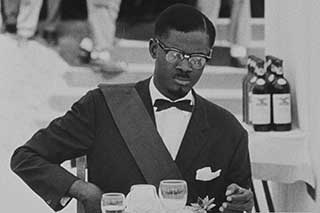
LUMUMBA, DEATH OF A PROPHET
LUMUMBA, LA MORT DU PROPHÈTE
Director: Raoul Peck
WRITTEN BY: Raoul Peck
COUNTRY OF PRODUCTION: France
LANGUAGE: French with English subtitles
COLOR INFO: Color/Black and White
RUNNING TIME: 69 minutes
PRODUCTION COMPANY: Velvet Film
Restored by The Film Foundation’s World Cinema Project and Cineteca di Bologna at L’Immagine Ritrovata/L’Image Retrouvée in collaboration with Velvet Film and supervised by Raoul Peck.
Funding provided by the Hobson/Lucas Family Foundation.
This restoration is part of the African Film Heritage Project, an initiative created by The Film Foundation’s World Cinema Project, the Pan African Federation of Filmmakers and UNESCO – in collaboration with Cineteca di Bologna – to help locate, restore, and disseminate African cinema.
NOTES ON THE RESTORATION:
LUMUMBA, DEATH OF A PROPHET was restored in 4K using the original 16mm camera and sound negatives.
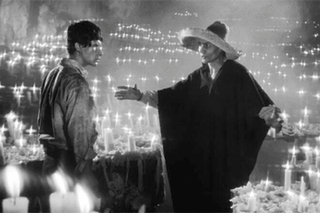
MACARIO
Director: Roberto Gavaldón
EDITING: Gloria Schoemann
DIRECTOR OF PHOTOGRAPHY: Gabriel Figueroa
ADAPTED BY: Emilio Carballido, Roberto Gavaldón
MUSICAL DIRECTOR: Raúl Lavista
STARRING: Ignacio López Tarso, Pina Pellicer, Enrique Lucero, José Gálvez, José Luis Jiménez, Mario Alberto Rodríguez, Consuelo Frank
COUNTRY OF PRODUCTION: Mexico
LANGUAGE: Spanish with English subtitles
COLOR INFO: B&W
RUNNING TIME: 91 minutes
NOTES ON THE RESTORATION:
MACARIO was restored from the original camera and sound negatives preserved at Televisa. Image scanning at 4K resolution and audio digitization work was completed by Filmoteca UNAM. Restoration of the picture and sound was carried out at L'Immagine Ritrovata in 2023.
Special thanks to Gabriel Figueroa Flores for supervising the color grading.
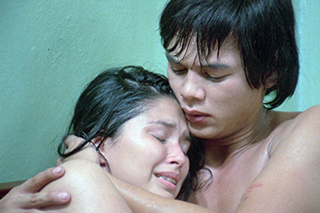
Manila in the Claws of Light
MAYNILA SA MGA KUKO NG LIWANAG
Director: Lino Brocka
EDITING: Edgardo Jarlego, Ike Jarlego
DIRECTOR OF PHOTOGRAPHY: Miguel De Leon
ADAPTED BY: Edgardo Reyes
PRODUCER: Miguel De Leon, Severino Manotok
MUSICAL DIRECTOR: Max Jocson
SOUND: Luis Reyes, Ramon Reyes
ART DIRECTOR: Miguel De Leon
STARRING: Bembel Roco, Hilda Koronel, Rafael Roco Jr., Lou Salbador Jr., Tommy Abuel, Jojo Abella, Juling Badabaldo
COUNTRY OF PRODUCTION: Philippines
LANGUAGE: Tagalog with French and English subtitles
COLOR INFO: Color
RUNNING TIME: 124’
PRODUCER: Miguel De Leon, Severino Manotok
Restored in 2013 by the Film Development Council of the Philippines and Cineteca di Bologna/L’Immagine Ritrovata laboratory, in association with The Film Foundation’s World Cinema Project , LVN, Cinema Artists Philippines and Mike De Leon. Restoration funded by Doha Film Institute.
There are undoubtedly a few people left who still remember that day in Cannes 1978 when rumors started circulating about a small, low budget film from the Philippines. A ‘dirty’ film, as some claimed, once more proving Lu Xun correct when he observed that while some art might originate in the sewer, it can be so full of passion that it goes as deep as tragedy.
And perhaps even further, because Lino was one of the most physical filmmakers that cinema has ever had. A true fireball, he moved insatiably from one set to rehearsals of Larawan in Fort Santiago where he directed a very dedicated group of actors, then on to a TV set where he would shoot a TV show in addition to a film as good as A Streetcar Named Desire.
He possessed a remarkable vitality that was expressed fully in the large demonstrations he organized against Marcos’ regime. With the money he made with his commercial films he bought some sophisticated sound equipment that allowed him to cover the entire Epifanio de los Santos Avenue, Manila’s massive north to south transportation corridor. Lino knew all the arteries of this swarming city, and he penetrated them just as he penetrated the veins of the outcasts in his films. Sometimes a vein would crack open and bleed. And that blood oozed on the screen with Insiang, Jaguar, Bona, Bayanko, all of which were shown in Cannes. And then, just like that, he died, in a stupid, easily avoidable car accident.
I remember a dinner, five weeks after Marcos’ fall, when Lino had realized that the Aquino regime would lead nowhere. He was no longer the same, nor were his films. He even lost his ability to joyfully seize the moment, which he was able to spread around among his friends.
Still, when you watch Manila, you’ll be burned by a flame that never goes out.
-Pierre Rissient, May 2013
A film director can survive in a museum, on a field or in the jungle – first, second or third world. In the third-world jungle he will be judged by his ability to survive, by the way he insists on making committed films and on believing in the power of cinema, even if no one ever asked him to do so. The rest stands on its own two feet. The aesthetics is a consequence.
A third-world filmmaker necessarily has to reinvent his own brand new cinema, squeezed by the rule of immediate profit (tougher in cinema than anywhere else), and the risk of a brutal clash with power. These are the directors who affect us deeply. Satyajit Ray in the 50’s, Ousmane Sembène in the 60’s, Lino Brocka at the end of the 60’s, and again Lino Brocka at the end of the ‘70s and today. [...]
Ultra-fast, fiercely vital, unclassifiable, this little man exists right in the heart of his country. He knows and experiences all the contradictions of Filipino culture and cinema. Brocka is not a solitary hero, he is a public figure; though marginal, exposed, and slandered, he is protected by his fame abroad. He has some key traits in common with Pasolini: a respect for “lower” culture, a feeling for the beauty of the body, a willingness to dissect the social links that the bodies represent.
Brocka loves flinging his characters into the traps of mise en scène, he never turns away when they are overwhelmed by emotion, and once they are cornered, neither can we.
-Serge Daney, 1981
NOTES ON THE RESTORATION:
The restoration of Maynila: sa mga kuko ng liwanag was made possible through the use of the original camera and sound negatives deposited by Pierre Rissient, on behalf of Lino Brocka, at the BFI National Archive in the early 1980s. The state of conservation of the negatives was critical.
The negative was wet-scanned at 4K resolution. The digital restoration process required considerable effort due to the great number of issues affecting the negative: tears, scratches, warping, visible marks and halos.
Color decay was also a significant problem. The film’s cinematographer, Mike De Leon, attentively guided the grading phase and validated a positive print for reference.
Image: © Courtesy of Film Development Council of the Philippines
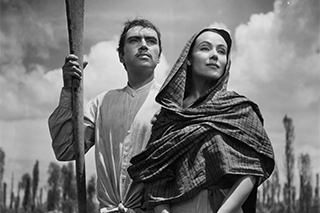
MARÍA CANDELARIA
Director: Emilio Fernández
WRITTEN BY: Emilio Fernández, Mauricio Magdaleno
EDITING: Jorge Bustos, Gloria Schoemann
DIRECTOR OF PHOTOGRAPHY: Gabriel Figueroa
PRODUCER: Agustín J. Fink
STARRING: Dolores Del Río, Pedro Armendáriz, Alberto Galán, Margarita Cortés, Miguel Inclán
COUNTRY OF PRODUCTION: Mexico
LANGUAGE: Spanish with English subtitles
COLOR INFO: Black and White
RUNNING TIME: 102 minutes
PRODUCER: Agustín J. Fink
Restored in 2024 by the Academy Film Archive, TelevisaUnivision, Filmoteca UNAM, and The Film Foundation's World Cinema Project. Restoration funding provided by the Material World Foundation.
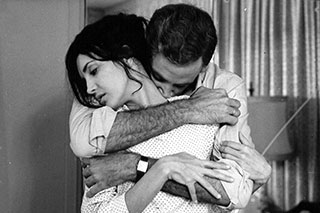
MEMORIES OF UNDERDEVELOPMENT
MEMORIAS DEL SUBDESARROLLO
Director: Tomás Gutiérrez Alea
WRITTEN BY: Tomás Gutiérrez Alea
EDITING: Nelson Rodríguez
DIRECTOR OF PHOTOGRAPHY: Ramón F. Suárez
PRODUCER: Miguel Mendoza
STARRING: Sergio Corrieri (Sergio Carmona Mendoyo), Daisy Granados (Elena), Eslinda Núñez (Noemi), Omar Valdés (Pablo), René de la Cruz (Elena’s brother)
COUNTRY OF PRODUCTION: Cuba
LANGUAGE: Castilian with English an French subtitles
COLOR INFO: Black and White
RUNNING TIME: 97 minutes
PRODUCTION COMPANY: Instituto Cubano del Arte e Industria Cinematograficos (ICAIC)
PRODUCER: Miguel Mendoza
Restored by Cineteca di Bologna at L’Immagine Ritrovata laboratory in association with Instituto Cubano del Arte e Industria Cinematográficos (ICAIC). Restoration funded by The George Lucas Family Foundation and The Film Foundation’s World Cinema Project.
I remember it as if it were yesterday. The film begins. A dizzying sound of drumbeats invades the movie theatre. Pulsating bodies take the screen. Dozens, hundreds of people, mostly blacks and mestizos, are dancing. Everything is movement and ecstasy. All of a sudden, gunshots ring out. A man lies on the ground - a lifeless body. Surrounding him, the deafening music and the rhythm continue. The beat is frenzied. The camera travels from face to face in the crowd until it stops at a young black woman. The frame freezes on her trance-lit face.
Thus begins Memorias del subdesarrollo, and watching it was like a shock to me. The film navigated between different states - fiction and documentary, past and present, Africa and Europe. The dialectic narrative took the form of a collage, crafted with an uncommon conceptual and cinematographic rigor. Scenes from newsreels, historical fragments and magazine headlines mixed and collided. In Memorias del subdesarrollo, Alea proved that filmic precision and radical experimentation could go hand in hand. Nothing was random. Each image echoing in the following image, the whole greater than the sum of its parts. Until then, having spent part of my childhood in Europe, I had a better knowledge of Italian neorealism and the French new wave than I did of the cinematic currents in Latin America. I admired Rossellini and Visconti and the early films of Godard and Truffaut - and with good reason. On taking the camera to the streets and showing the faces and lives of ordinary people, the neorealists and the directors of the nouvelle vague had fomented a true ethical and aesthetic revolution in films.
But Memorias del subdesarrollo carried with it something more. A point of view that was vigorous, original and, more importantly, pertained directly to us, Latin Americans. It was like a reverse angle - one that seemed more resonant to me than that which was prevalent in other latitudes.
- Walter Salles
I remember that soon after the Revolution, everybody (and I mean everybody) thought that our island could be transformed, from one moment to the next, into a sort of Switzerland of the Caribbean. We had everything we needed: the people, the weapons, the enthusiasm, and the opportunity to re-build our country from scratch. Only later did we understand that we were basically a farming country, that industrialization would take more time than we had hoped, and that our island was small, poor and underdeveloped. All of a sudden, everything that had once seemed within arm’s reach was further and further away. The new reality is a radical one. We don’t just need a new economy, new politics, a new society. We need a new way of thinking, and this will take longer. For now, we have to accept who we are and keep fighting, which brings me back to the concept of underdevelopment, but this time, of a moral and aesthetic nature.
Every day, to build our society, we have to confront the type of people we despise: those who think they are the only custodians of the Revolution, who believe only they know socialist morality, and who have institutionalized mediocrity and provincialism. The bureaucrats, with or without a desk, who talk to our people as one does with children, telling us what to show them, how to address them. And since these bureaucrats believe that our people are not ready to know the whole truth, they are ashamed of them, and suffer from a national inferiority complex. I hope, with my film, to annoy, provoke and upset all of them.
- Tomás Gutiérrez Alea
NOTES ON THE RESTORATION:
The restoration of Memorias del Subdesarrollo was made possible through the use of the original camera and sound negative and a vintage duplicate positive provided and preserved by ICAIC.
The camera negative is affected overall by advanced vinegar syndrome – in particular where the duplicate negatives of archival footage are edited into the film – causing a consistent ‘halo’ on the image. Most of reel 3 was irreversibly crystallized and half of reel 4 was badly compromised by decay. The duplicate element was used to replace the image in those portions. The camera negative was scanned at 4K, using wet-gate only for the most problematic sections.
The dual bilateral variable area sound negative showed a poor photographic definition, resulting in a harsh and raspy sound, with noticeable image spread distortion. Scratches, dirt and dust on the emulsion caused heavy crackles and clicks during reproduction. Sound restoration was able to reduce these issues considerably.
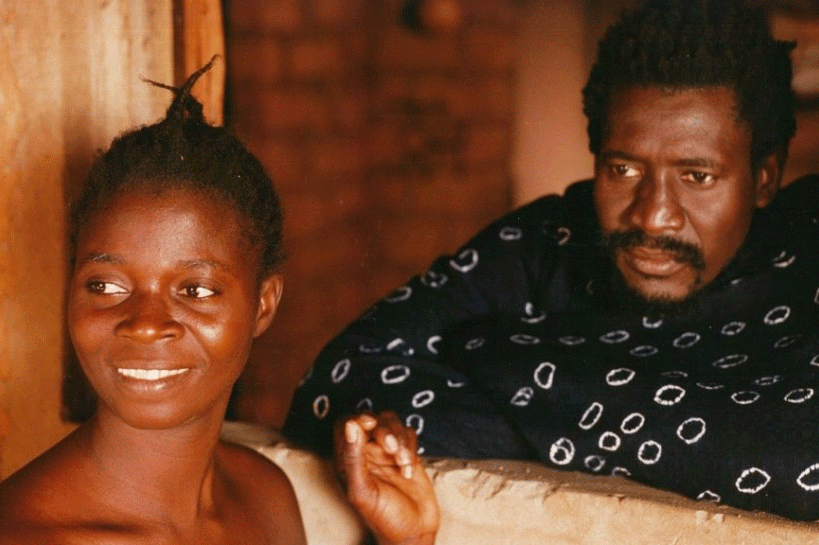
MORTU NEGA
Director: Flora Gomes
WRITTEN BY: Manuel Rambout Barcelos, Flora Gomes, David Lang
EDITING: Christiane Lack
DIRECTOR OF PHOTOGRAPHY: Dominique Gentil
PRODUCER: Maria Cecilia Fonseca
SOUND: José da Silva Carvalho
STARRING: Bia Gomes, Tunu Eugenio Almada, Mamadu Uri Balde, Pedro da Silva, Flora Gomes, Homna Nalete, M'Male Nhasse
COUNTRY OF PRODUCTION: Guinea-Bissau
LANGUAGE: Kriolu, Portuguese
COLOR INFO: Color
RUNNING TIME: 96 minutes
PRODUCER: Maria Cecilia Fonseca
Restored by The Film Foundation’s World Cinema Project and Cineteca di Bologna at L’Immagine Ritrovata laboratory in association with Flora Gomes. Funding provided by the Hobson/Lucas Family Foundation.
This restoration is part of the African Film Heritage Project, an initiative created by The Film Foundation’s World Cinema Project, the Pan African Federation of Filmmakers and UNESCO – in collaboration with Cineteca di Bologna – to help locate, restore, and disseminate African cinema.
NOTES ON THE RESTORATION:
MORTU NEGA was restored in 4K from the original super 16mm camera negative and 35mm magnetic sound, stored at LTC Laboratoires. Color grading was supervised by Dominique Gentil and Flora Gomes. Special thanks to Arsenal – Institut für Film und Videokunst.
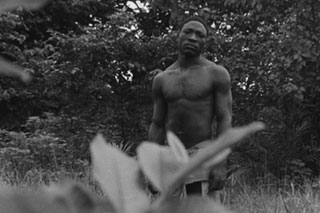
MUNA MOTO
Director: Dikongué-Pipa
WRITTEN BY: Dikongué-Pipa
EDITING: Andrée Davanture, Dominique Saint-Cyr, Jules Takam
DIRECTOR OF PHOTOGRAPHY: Jean-Pierre Dezalay, Jean-Luc Léon
STARRING: David Endéné, Arlette Din Bell, Philippe Abia, Gisèle Dikongué-Pipa, Jeanne Mvondo
COUNTRY OF PRODUCTION: Cameroon
LANGUAGE: French with English subtitles
COLOR INFO: Black and White
RUNNING TIME: 90 minutes
Restored in 2019 by Cineteca di Bologna/L’Immagine Ritrovata and The Film Foundation’s World Cinema Project. Funding provided by the Hobson/Lucas Family Foundation.
This restoration is part of the African Film Heritage Project, an initiative created by The Film Foundation’s World Cinema Project, the Pan African Federation of Filmmakers and UNESCO – in collaboration with Cineteca di Bologna – to help locate, restore, and disseminate African cinema.
NOTES ON THE RESTORATION:
The 4K restoration of Muna Moto was made from the 35mm original camera and sound negatives and a second generation dupe negative.
Despite wet-gate scanning to minimize mold damage, some sections of the camera negative had to be replaced by scanning the dupe negative.
Following director Dikongue-Pipa’s suggestion, the dupe negative was also used for the opening and closing cards which differed from the original negative. A vintage 35mm print was used as a reference for picture grading. Special thanks to Cinémathèque Royale de Belgique.
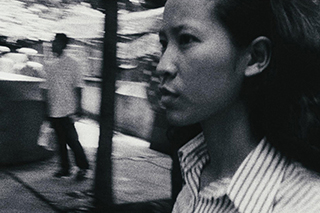
Mysterious Object at Noon
DOKFAH NAI MEU MAAN
Director: Apichatpong Weerasethakul
EDITING: Mingmongkol Sonakul, Apichatpong Weerasethakul
DIRECTOR OF PHOTOGRAPHY: Apichatpong Weerasethakul, Prasong Klimborron
PRODUCER: Gridthiya Gaweewong, Mingmongkol Sonakul
SOUND: Teekadetch Watcharatanin, Sirote Tulsook, Paisit Phanpruksachat, Adhinan Adulayasis
STARRING: Somsri Pinyopol, Duangjai Hiransri, To Hanudomlapr, Kannikar Narong, and the villagers of Thailand
COUNTRY OF PRODUCTION: Thailand
LANGUAGE: Thai
COLOR INFO: Black and White
RUNNING TIME: 88 minutes
PRODUCTION COMPANY: 9/6 Cinema Factory, Firecracker Films, Bangkok
PRODUCER: Gridthiya Gaweewong, Mingmongkol Sonakul
Restored in 2013 by the Austrian Film Museum and Cineteca di Bologna/L’Immagine Ritrovata laboratory, in association with The Film Foundation’s World Cinema Project, LISTO laboratory in Vienna, Technicolor Ltd in Bangkok, and Apichatpong Weerasethakul. Restoration funded by Doha Film Institute.
On his journey, the director hears a story which he then asks people to continue as they wish— like a game of Chinese Whispers (and relating also to the French Surrealists’ concept of the “cadavre exquis”). The original title, Dokfah nai meu maan, roughly translates as Heavenly Flower in Devil’s Hand. The name of that flower, Dokfah, is also the name of the woman who appears in the story-within-a-film as the teacher of a young paraplegic boy. The title is reminiscent of an archetypical Thai melodrama, but in the hands of the most imaginative re interpreter of national tradition, it becomes an epic meta-narrative.
I want to give the audience the freedom to fly or to float, to just let their mind go here and there, to drift, like when we sit in a train, listen to a Walkman, and look at the landscape. It is liberating, and also the audience understands that they are not watching a routine, three act narrative.
- Apichatpong Weerasethakul
NOTES ON THE RESTORATION:
The restoration of Mysterious Object at Noon utilized the 35mm duplicate negative with burned-in English subtitles deposited at the Austrian Film Museum by Apichatpong Weerasethakul in 2007. This negative was struck in 1999 from the (now lost) original 16mm camera reversal element.
The duplicate negative was scanned at 3K at the Austrian Film Museum. Painstaking digital restoration work was undertaken to remove dust, scratches and other visible marks while keeping the look (and the specific defects) of the original 16mm camera reversal material intact. Color correction was carried out at the LISTO laboratory in Vienna; the 35mm optical soundtrack negative was transferred at L’Immagine Ritrovata in Bologna; the digital sound restoration was performed at Technicolor Ltd in Bangkok.
The restoration was carried out in close collaboration with the filmmaker and completed in June 2013. The process produced a new 35mm internegative.
Image: © Courtesy of Apichatpong Weerasethakul
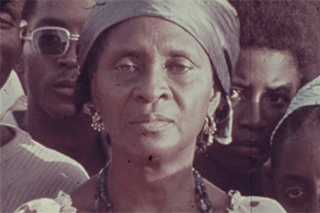
O REGRESSO DE AMÍLCAR CABRAL
Director: Sana Na N'Hada, José Bolama, Josefina Crato, Djalma Fettermann, Flora Gomes
COUNTRY OF PRODUCTION: Guinea-Bissau
LANGUAGE: Portuguese, Guinea-Bissau Creole, Mandika, French
COLOR INFO: Color
Restored by The Film Foundation’s World Cinema Project and Cineteca di Bologna at L’Immagine Ritrovata laboratory in association with Cooperativa de Produçao Cinematografica e Audiovisual GEBA FILMES. Funding provided by the Hobson/Lucas Family Foundation.
This restoration is part of the African Film Heritage Project, an initiative created by The Film Foundation’s World Cinema Project, the Pan African Federation of Filmmakers and UNESCO – in collaboration with Cineteca di Bologna – to help locate, restore, and disseminate African cinema.
NOTES ON THE RESTORATION:
O REGRESSO DE AMÍLCAR CABRAL was restored in 4K from a 16mm color reversal print and the original 16mm soundtrack negative, preserved at the Svenska Filminstitutet. Color grading was supervised by Flora Gomes and Sana na N'HADA. Special thanks to Arsenal – Institut für Film und Videokunst.
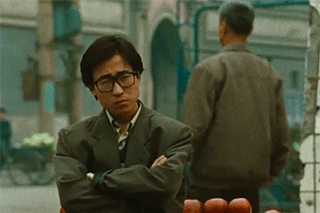
PICKPOCKET
XIAO WU
Director: Jia Zhang-ke
WRITTEN BY: Jia Zhang-ke
EDITING: Lin Xiao Ling
DIRECTOR OF PHOTOGRAPHY: Yu Lik Wai
PRODUCER: Li Kit Ming, Jia Zhang-ke
ASSISTANT DIRECTOR: Gu Zheng
ART DIRECTOR: Liang Jing Dong
STARRING: Wang Hong wei, Hao Hong Jian, Zuo Bai Tao
COUNTRY OF PRODUCTION: China
LANGUAGE: Mandarin
COLOR INFO: Color
RUNNING TIME: 108 minutes
PRODUCER: Li Kit Ming, Jia Zhang-ke
Restored by The Film Foundation's World Cinema Project and Cineteca di Bologna at L'Immagine Ritrovata laboratory in collaboration with Jia Zhang-ke and in association with MK2.
Restoration funding provided by the Hobson/Lucas Family Foundation.
NOTES ON THE RESTORATION:
The 4K restoration of XIAO WU was made from the original 16mm camera and sound negatives. The restoration process and color grading was supervised by director Jia Zhang-ke.
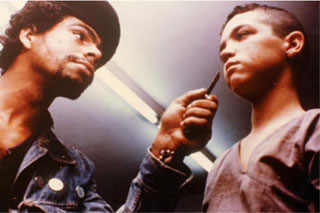
PIXOTE
PIXOTE, A LEI DO MAIS FRACO
Director: Héctor Babenco
WRITTEN BY: Héctor Babenco, Jorge Durán
EDITING: Luiz Elias
DIRECTOR OF PHOTOGRAPHY: Rodolfo Sanchez
PRODUCER: Sylvia B. Naves, Paulo Francini, José Pinto
ART DIRECTOR: Clóvis Bueno
STARRING: Fernando Ramos da Silva (Pixote), Jorge Julião (Lilica), Gilberto Moura (Dito), Edilson Lino (Chico), Zenildo Oliveira Santos (Fumaça), Claudio Bernardo (Garatao), Israel Feres David (Roberto Pie de Plata), Jose Nilson Martin Dos Santos (Diego), Marília Pêra (Sueli)
COUNTRY OF PRODUCTION: Brazil
LANGUAGE: Portuguese with English subtitles
COLOR INFO: Color
RUNNING TIME: 128 Minutes
PRODUCTION COMPANY: Embrafilme, HB Filmes
PRODUCER: Sylvia B. Naves, Paulo Francini, José Pinto
Restored by The Film Foundation’s World Cinema Project and Cineteca di Bologna at L'Immagine Ritrovata in association with HB Filmes, Cinemateca Brasileira, and JLS Facilitações Sonoras. Restoration funded by the Hobson/Lucas Family Foundation.
NOTES ON THE RESTORATION:
Restored in 4K from the 35mm original camera negative and a first generation 35mm dupe negative preserved at the Cinemateca Brasileira. In order to minimize the overall presence of mold, particularly invasive in reels 3, 5 and 6, the camera negative was wet-gate scanned at 4K resolution and digital restoration required considerable efforts. Missing frames in three different shots of reel 3 were replaced using the internegative.
The recently rediscovered original magnetic soundtrack, also affected by mold, with the oxide peeling off the base, was carefully repaired by Beto Ferraz then digitized and restored by José Luiz Sasso (ABC), sound engineer for Hector Babenco in 1981. Final color grading was supervised by cinematographer Rodolfo Sánchez using a first generation vintage 35mm print as reference.
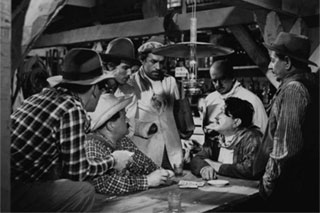
PRISIONEROS DE LA TIERRA
Director: Mario Soffici
WRITTEN BY: Ulyses Petit de Murat, Darío Quiroga
EDITING: Gerardo Rinaldi, José de Nico
DIRECTOR OF PHOTOGRAPHY: Pablo Tabernero
MUSICAL DIRECTOR: Lucio Demare
PRODUCTION DESIGN: Ralph Pappier
STARRING: Ángel Magaña (Esteban Podeley), Elisa Galvé (Andrea), Francisco Petrone (Köhner), Homero Cárpena, Raúl De Lange, Roberto Fugazot
COUNTRY OF PRODUCTION: Argentina
LANGUAGE: Spanish and Guaranì with English subtitles
COLOR INFO: Black and White
RUNNING TIME: 85 minutes
PRODUCTION COMPANY: Pampa Films
Restored by Cineteca di Bologna at L’Immagine Ritrovata and The Film Foundation’s World Cinema Project in association with the Museo del Cine Pablo Ducros Hicken with elements provided by the Cinémathèque Française and the Narodni Filmovy Archiv.
Funding provided by the Hobson/Lucas Family Foundation.
NOTES ON THE RESTORATION:
PRISIONEROS DE LA TIERRA was restored using the best existing elements: a first generation 35mm positive print held at La Cinémathèque française and a recently rediscovered third generation 35mm positive print preserved by the Narodni Filmovy Archiv. For its overall completeness and photographic quality, the first generation 35mm positive print was used to restore the image, while the third generation 35mm positive print was the primary source for sound restoration.
A 16mm dupe negative, provided by the Museo del Cine, has been also been studied and compared as a reference. Color grading was supervised by Paula Félix Didier, director of the Museo del Cine Pablo Ducros Hicken.
